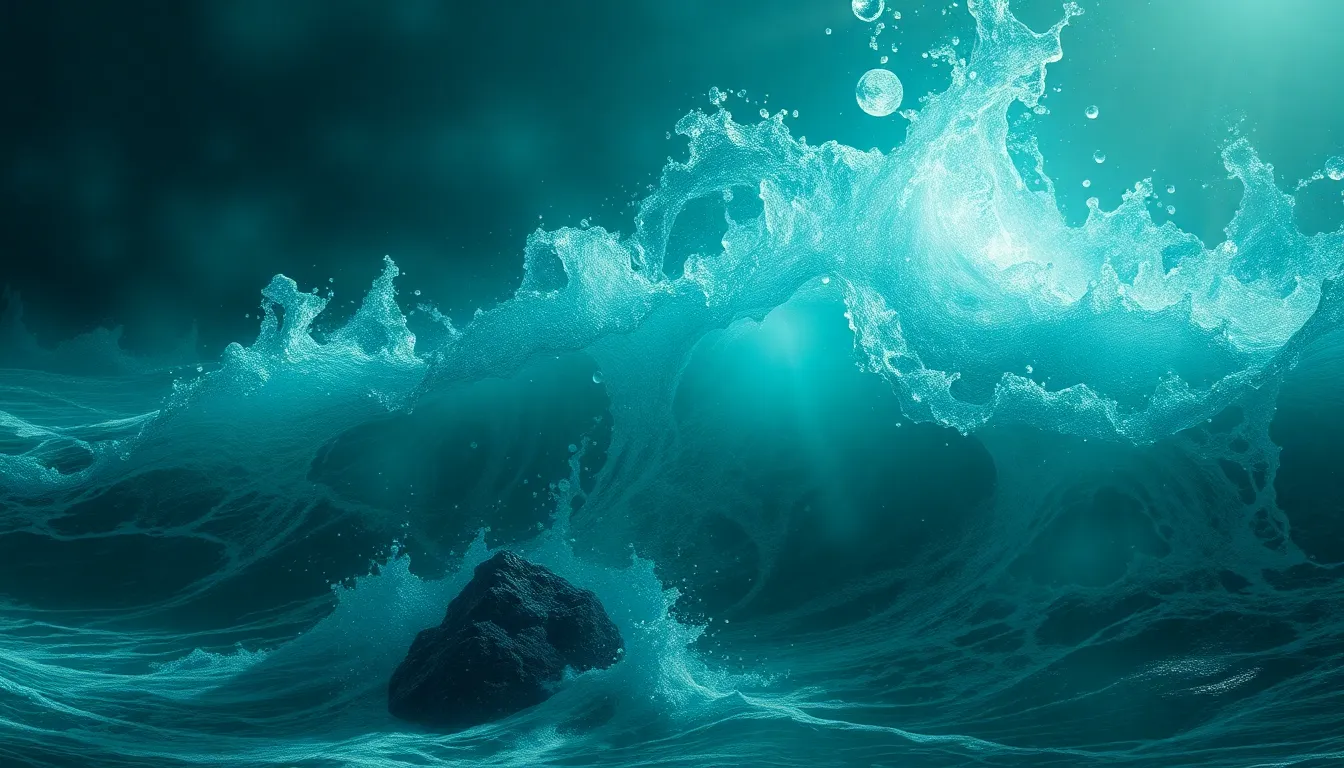The Sea Witch’s Curse: Exploring the Powers of Water-Based Magic
I. Introduction
Water has always held a significant place in folklore and mythology, representing emotions, intuition, and the unconscious. From the healing springs in ancient cultures to the tempestuous seas in various legends, water is a powerful element often intertwined with magic. Among the most captivating figures associated with water magic is the Sea Witch, a character shrouded in mystery and often linked to curses that reflect the duality of water’s nature: nurturing yet destructive.
This article aims to explore the various facets of water-based magic, particularly through the lens of the Sea Witch and her curse. We will delve into the historical origins of this archetype, the elemental properties of water magic, and the implications of its use in both folklore and contemporary practices.
II. The Origins of the Sea Witch Archetype
The Sea Witch archetype has deep historical roots across many cultures. In Scandinavian folklore, sea witches wield the power of the ocean and are often depicted as wise women who can manipulate tides and predict storms. Similarly, in Celtic traditions, figures like the Selkie or the mermaid embody the magical connection between humans and the sea.
Common characteristics of sea witches include:
- Knowledge of herbalism and natural remedies.
- Ability to communicate with marine life.
- Mastery over weather patterns and tides.
- Often depicted as both benevolent and malevolent, emphasizing the dual nature of water.
Water, as an element, has significantly shaped these magical practices, acting as a source of power and a medium for rituals. The ebb and flow of tides symbolize the cyclical nature of life and magic, making it a perfect backdrop for the Sea Witch’s enchantments.
III. The Elements of Water Magic
Water is unique among the four classical elements, characterized by its fluidity, adaptability, and depth. Understanding its elemental properties is crucial for anyone interested in water magic.
Some key properties of water include:
- Fluidity: Symbolizing adaptability and change.
- Reflectiveness: Acting as a mirror to one’s emotions and intentions.
- Purity: Associated with healing and cleansing.
Common tools and symbols associated with water magic include:
- Shells and stones from the ocean.
- Bowls of water for scrying or offering.
- Blue candles to represent the element.
- Herbs like lavender and seaweed for their magical properties.
Rituals and spells tied to water may involve:
- Creating a sacred space near a body of water.
- Using water for cleansing and purification.
- Conducting divination practices through scrying.
- Offering prayers or intentions to water spirits.
IV. The Sea Witch’s Curse: A Deeper Investigation
The Sea Witch’s curse often serves as a cautionary tale in literature and folklore. Typically, it involves a powerful spell that results in unintended consequences, reflecting the complexities of wielding water magic. These curses can symbolize the dangers of hubris, betrayal, or the loss of connection to nature.
In various stories, the symbolism behind the curse can be profound. For example, in Hans Christian Andersen’s “The Little Mermaid,” the mermaid’s deal with the Sea Witch leads to personal sacrifice and suffering. Here, the curse represents a longing for transformation and the painful consequences of pursuing unattainable desires.
Some notable examples of sea witch curses include:
- The curse of the selkie, who must shed her seal skin to live as a human.
- The enchantments of the Lady of the Lake in Arthurian legend.
- The vengeful spells of Ursula from Disney’s adaptation of “The Little Mermaid.”
V. The Powers and Limitations of Water-Based Magic
Water magic is often associated with various abilities, including:
- Healing: Water is believed to have purifying properties that can aid in physical and emotional healing.
- Transformation: The fluid nature of water allows for change and adaptation, making it a powerful tool for personal transformation.
- Divination: Many practitioners use water as a medium for scrying, tapping into its reflective qualities to gain insights.
However, wielding such magic comes with potential drawbacks:
- Emotional Overwhelm: Water magic can evoke strong emotions, which may be difficult to manage.
- Unpredictability: Just as the sea can be calm one moment and stormy the next, water magic can yield unexpected results.
Ethical considerations also play a significant role in the use of water magic. Practitioners must respect the element, understand its power, and use it responsibly, ensuring that their intentions align with the greater good.
VI. Water Magic in Contemporary Practices
In recent years, there has been a resurgence of interest in sea witchcraft and water magic, with modern interpretations focusing on personal empowerment and environmental stewardship. Contemporary practitioners often draw on traditional practices while incorporating new ideas and beliefs.
Popular rituals among modern sea witches may include:
- Creating water altars with natural elements like shells and stones.
- Performing cleansing rituals with ocean water or rainwater.
- Engaging in moon phases rituals, particularly during full moons for manifestation.
The influence of environmental concerns is also evident, as many practitioners emphasize the importance of protecting water sources and advocating for ecological responsibility in their magical practices.
VII. The Connection Between Water and Emotions
Water has a profound psychological impact, often symbolizing the depths of human emotions. In magic, it serves as a bridge to explore these feelings, offering insights into the self.
The relationship between water elements and emotional healing can be seen in various practices, such as:
- Using water for grounding and centering during meditation.
- Engaging in rituals that encourage emotional release through tears or movement.
- Utilizing water in dream work to access subconscious thoughts.
Case studies of water magic used for emotional transformation include:
- Practitioners who create rituals to release past traumas by submerging objects in water.
- Using ocean tides to symbolize the ebb and flow of emotional states.
VIII. Conclusion
In summary, the significance of water-based magic and the Sea Witch’s curse is profound and multifaceted. Water holds the power to heal, transform, and connect us to our deepest emotions. The exploration of this magic invites individuals to reflect on their own relationship with water and its myriad meanings.
As we navigate the complexities of modern life, embracing the lessons of the Sea Witch can inspire us to forge deeper connections with nature and our own emotional landscapes. The legacy of the Sea Witch endures, reminding us of the magic that resides not only in the depths of the ocean but also within ourselves.



